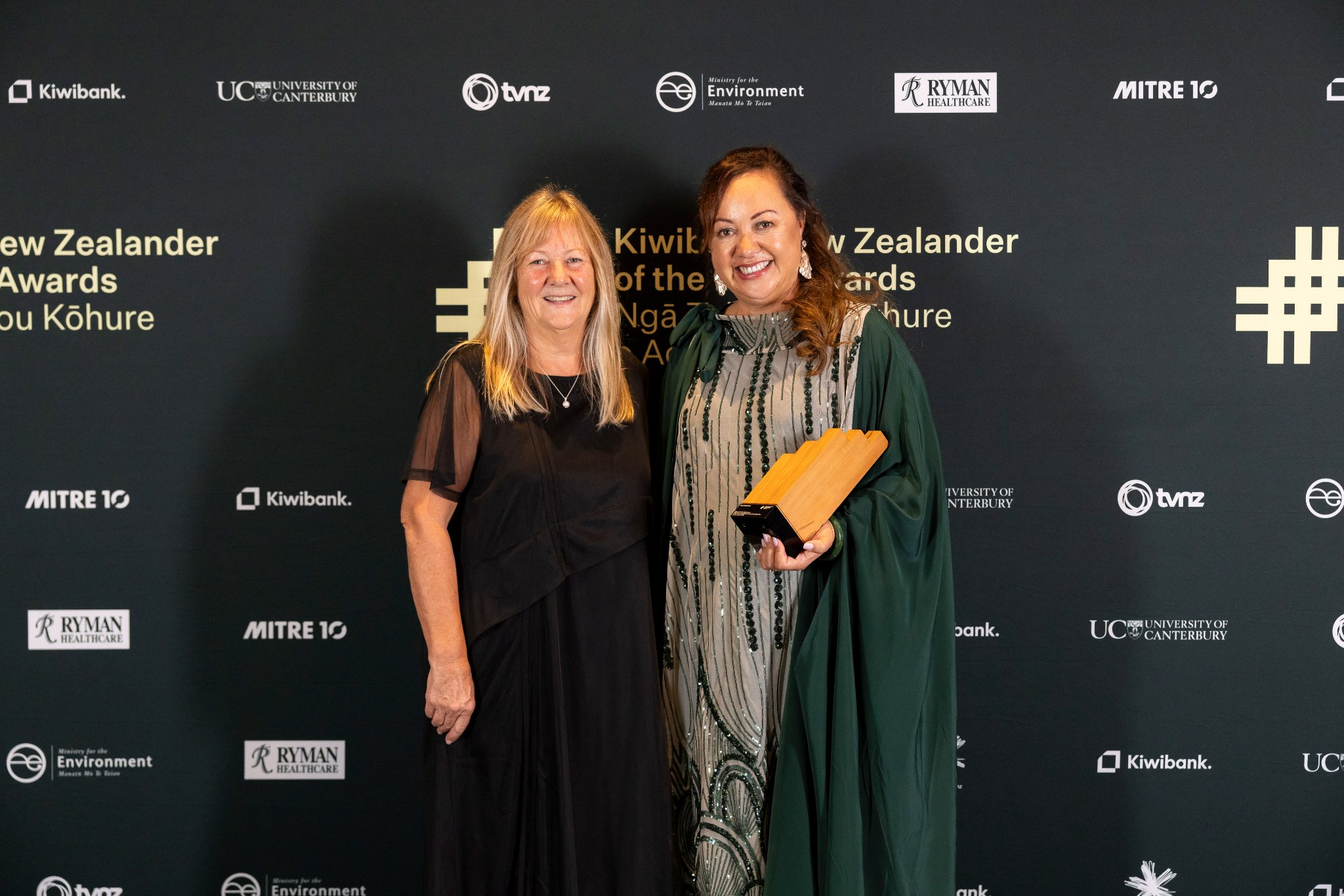Ministry for the Environment’s Environmental Hero of the Year - Nicola MacDonald
Congratulations on winning Environmental Hero of the Year. What does this win mean to you?
Thank you very much! Being named Te Toa Taiao o te Tau / Environmental Hero of the Year is a humbling recognition of the collective efforts dedicated to Ngāti Manuhiri Settlement Trust’s environmental conservation. It emphasises the importance of our work and inspires me to continue advocating for the safeguarding of our environment for our tangata whenua and future generations.
Tell us about your path to being involved in conservation work.
My journey into conservation work began with my grandparents, who lived by the Maramataka. I recall their first teachings being to look after the land, and seas, and to be respectful—they were very humble people. My grandmother was a market gardener who practised whakawhanaungatanga when planting (similar to companion planting today). My grandfather, who served in the Māori Battalion in WW2, was a fisherman who fished by the lunar calendar, and taught me (as we’d go out on the boat together) to look after Tangaroa’s children.
In 2012, Ngāti Manuhiri achieved and settled their Treaty Settlement with the Crown, which led to the establishment of the Ngāti Manuhiri Settlement Trust. I started working with the Trust as an advisor in 2017, and became the Chief Executive in 2019. It’s a privilege to hold this role and support our Trust to accomplish actions that help protect and restore te taiao. I am also Chair of the Auckland Conservation Board and Pou Taiao (representing the 19 mana whenua of Tāmaki Makaurau), co-chair of the Hauraki Gulf Forum, and previously was Chair of the Aotea Conservation Board. I am a member of several governance bodies including the Māori Women’s Welfare League and the climate change platform Oho Mauri Trust. I have always believed in a holistic approach to conservation work rooted in kaitiakitanga and above all, l walk my talk, hīkoi te kōrero.
How do your diverse range of roles impact your role as a conservationist?
The variety of roles that I hold gives me a broad understanding of issues across our rohe and beyond. It also allows me to hear about solutions and identify opportunities to collaborate, whether that is with rangers from Te Papa Atawhai (Department of Conservation) or University academics. There are a vast array of innovative solutions to the challenges we face in our environment and the best results come when those with the pūtea (funding) trust and enable grassroots communities to use their specialised, localised knowledge to inform environmental responses. I’m not just a governance expert and environmental strategist, I’m a practitioner of kaitiakitanga and believe it is my duty to use my position to elevate mana whenua voices at decision making tables.
What are your proudest conservation achievements to date?
There are multiple conservation achievements that I am extremely proud of to date. I led the deployment of the world’s largest shellfish bed restoration (150 tonnes of kuta/mussels) in the Hauraki Gulf. I have participated in and planted over 350,000 trees in the Mahurangi to combat the impacts of climate change. I am a co- researcher on mātauranga Māori methods to use natural fibres to replace plastic ropes used for kutai/mussel spat and I led the pest eradication of Rakitu Island which is the last pest-free island in the Gulf. I have developed the first dedicated native fish and endangered species sanctuary in Tāmaki, and I authorised and carried out the first removal and elimination protocol of caulerpa at Iris Shoal near Kawau Island. Recently I also presented to the Environment Select Committee at Parliament on the Trust’s views for increased marine protected areas in Te Moananui-ā-Toi/Hauraki Gulf.
What projects are you focussed on for 2024?
It will be clear from previous answers that one initiative I am extremely passionate about is the eradication of exotic caulerpa, the invasive seaweed colonising our seabeds and disrupting our delicate marine ecosystem. We wasted no time in tackling the removal of caulerpa when it was discovered near Kawau Island in July 2023. We funded experts from California to join us here in support of our work, created collateral to share in our rohe to help people easily understand and identify caulerpa, and we use our boats to patrol the wai. I’m particularly proud of our rangatahi who are a part of Mahere Ārai Moana Raumati (our summer programme which sits under our wider oceans strategy, Te Au ō Moana), and patrol our waters in Te Moananui-ā-Toi, surveying for caulerpa and raising awareness about this threat by talking to locals and boaties. We continue to work on a comprehensive and community-focused plan to eradicate this invasive seaweed and protect Te Moananui-ā-Toi/The Hauraki Gulf
to ensure the health and preservation of our waters for generations
to come.
